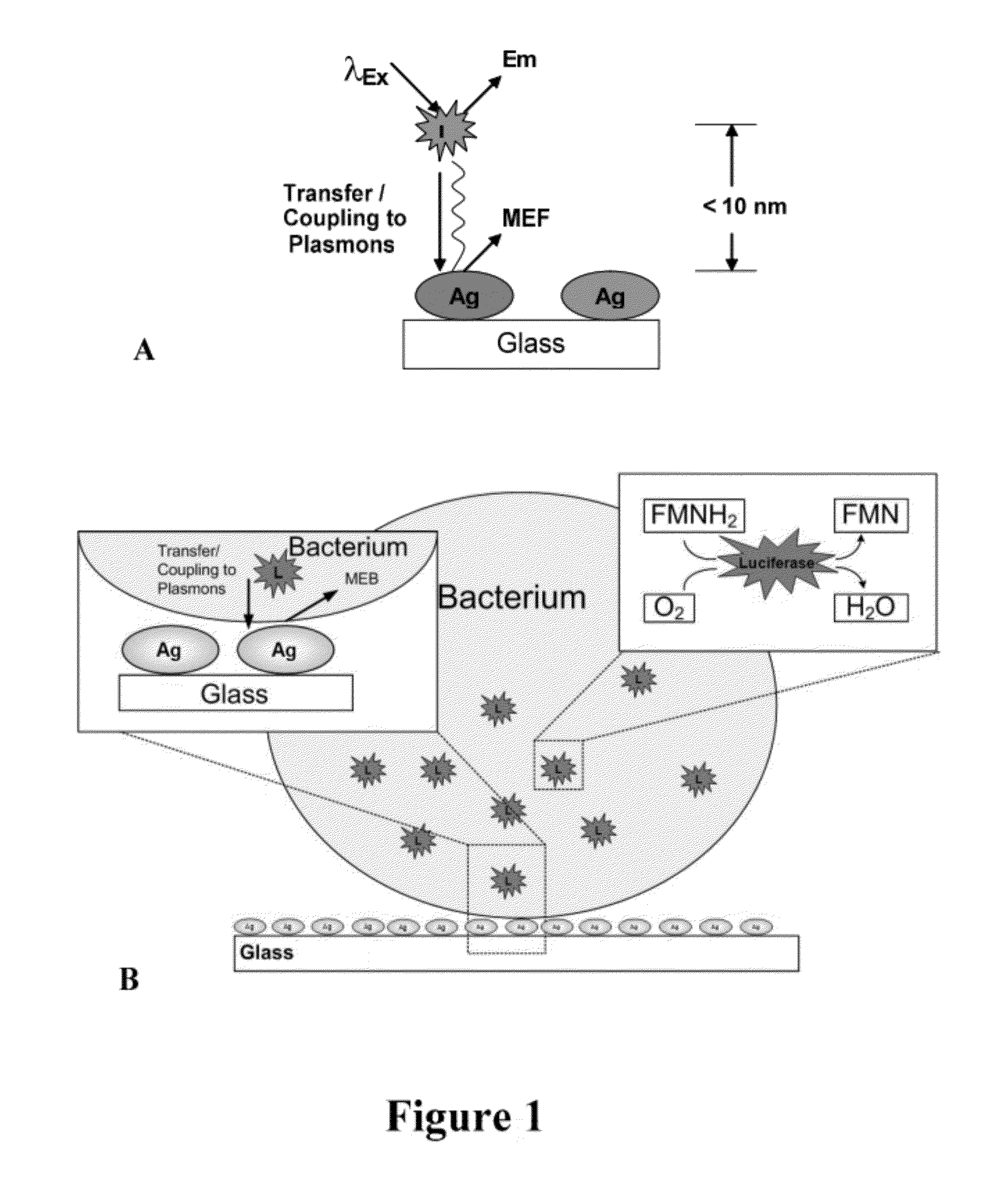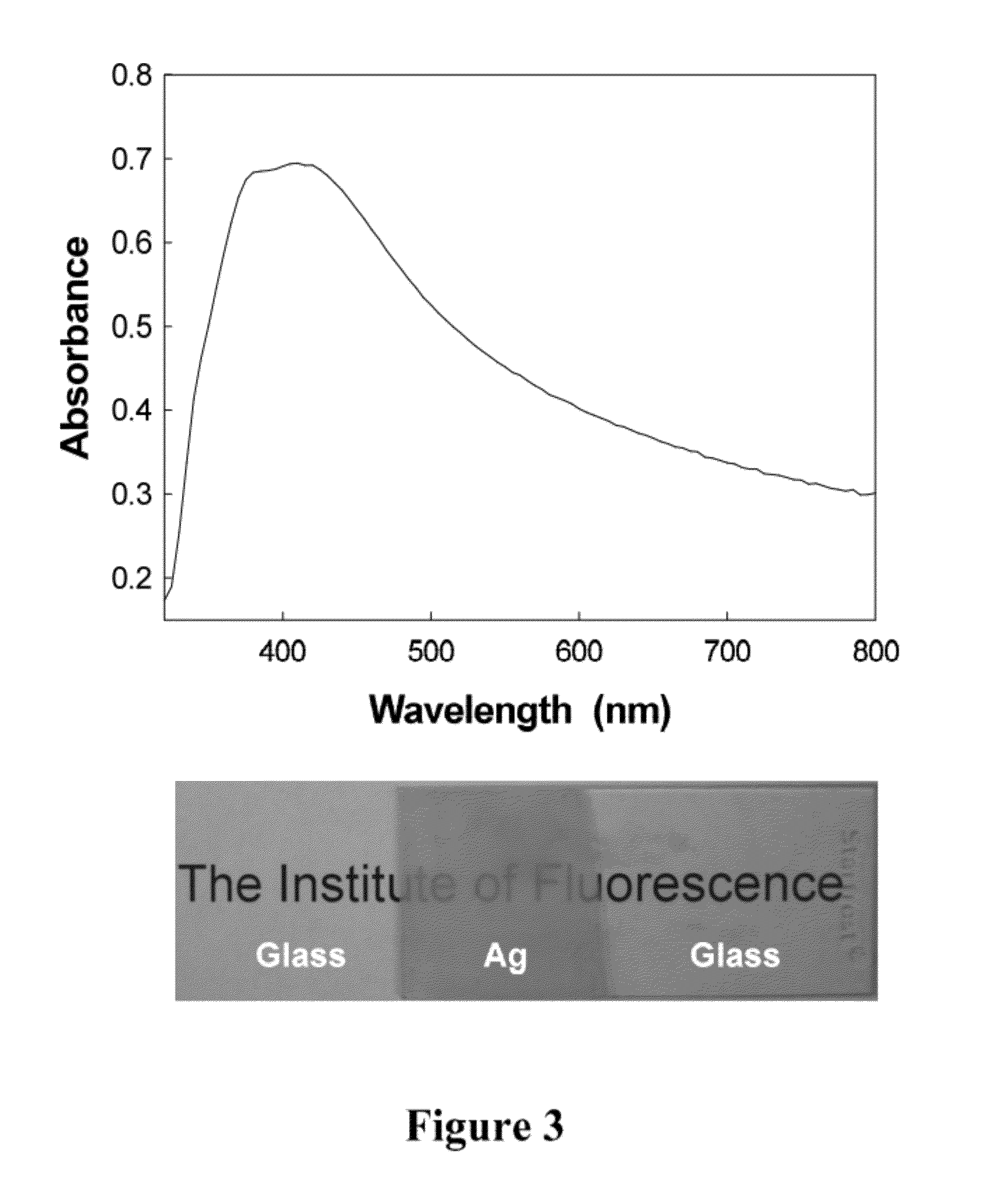Metal-enhanced bioluminescence: an approach for monitoring biological bioluminescent processes
a bioluminescence and metal-enhanced technology, applied in the field of bioluminescence signature enhancement, can solve the problems of limited sensitivity and slowness of current testing methods, and achieve the effect of increasing the speed of chemical reactions and enhance the detection system
- Summary
- Abstract
- Description
- Claims
- Application Information
AI Technical Summary
Benefits of technology
Problems solved by technology
Method used
Image
Examples
examples
[0088]The observation of Metal (Plasmon)-enhanced Bioluminescence is reported herein. Bacteria, which are capable of generating specific Bioluminescence signatures upon metabolic changes (general toxicity) have been studied from both glass and silvered glass microwell bottoms, where the silvered microwells have been modified with surface deposited Silver Island Films (SiFs). The presence of the SiFs plasmon-amplifies the near-field Bioluminescence signatures, ≈<50 nm from the surface, enabling amplified detection of the reporter Bioluminescence indicating sample toxicity. Using our approach a greater than 5-fold enhancement in far-field Bioluminescence occurs, with much greater enhancements in the near-field predicted.
[0089]The results described herein show results that are similar to fluorescence, phosphorescence and chemiluminescence based approaches, Metal-Enhanced Bioluminescence can also be used to Plasmon-enhance Bioluminescence signatures, FIG. 1—Bottom, enabling the much mor...
PUM
| Property | Measurement | Unit |
|---|---|---|
| molecular weight | aaaaa | aaaaa |
| diameter | aaaaa | aaaaa |
| diameter | aaaaa | aaaaa |
Abstract
Description
Claims
Application Information
 Login to View More
Login to View More - R&D
- Intellectual Property
- Life Sciences
- Materials
- Tech Scout
- Unparalleled Data Quality
- Higher Quality Content
- 60% Fewer Hallucinations
Browse by: Latest US Patents, China's latest patents, Technical Efficacy Thesaurus, Application Domain, Technology Topic, Popular Technical Reports.
© 2025 PatSnap. All rights reserved.Legal|Privacy policy|Modern Slavery Act Transparency Statement|Sitemap|About US| Contact US: help@patsnap.com



